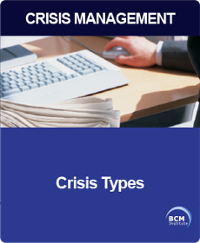 Here is another type of crisis scenario described in the "What Crisis or Crisis Scenario Should I Be Planning For My Organisation?" that is on the list to handle as part of crisis management and crisis communication. Click the right icon to read more.
Here is another type of crisis scenario described in the "What Crisis or Crisis Scenario Should I Be Planning For My Organisation?" that is on the list to handle as part of crisis management and crisis communication. Click the right icon to read more.
Spreading of Malicious Rumors
As a Crisis Management and Crisis Communication professional appointed to handle and manage various crises that may plague your organisation, spreading rumours can sometimes seem trivial. It is often beyond the scope of the Crisis Management professional's job description.
However, it is still essential to identify and coordinate with the relevant parties actually responsible for how implementing a crisis response plan to tackle rumours. In the age of social media, rumours spread fast, and fake news can leave a big dent in the reputation of even the most respectable organizations is not answered swiftly.
What are Rumors?
Starting in 1982, leaflets spread rumors of international consumer goods company Proctor & Gamble's allegiance with the Church of Satan to thousands of Californian residents. This caused over 15,000 calls to the company and forced Proctor & Gamble to host multiple news conferences to ward off the rumors. They were forced to ask church authority figures to vouch for them and hired investigators to trace the source of the rumors.
Rumours are circulating stories, reports, opinions, and talk of uncertain and distorted truth. While seemingly trivial, the right rumour at the right time can cause catastrophic damage to any organization, and it is in the interest of a Crisis Management Professional to work with the relevant parties to nip them in the bud.
To cite an example, in October 2008, it was reported that Steve Jobs had a heart attack and had been rushed to the hospital. As soon as this news hit the internet, it started circulating across all social media platforms. Within the first hour of trading, Apple stocks lost 10% of their value (Nearly 5 billion dollars), which was caused by an 18-year-old posting an unsubstantiated rumour to CNN's Ireport website. Even the smallest rumours can grow and mutate and can cause untold damage to the largest, most established organizations.
Real Examples
These are some real examples of malicious rumours that have damaged companies.
1. Corona tastes like piss
A rumour allegedly spread by Heineken distributor took advantage of Corona's yellow-coloured product to insinuate that Corona not only tasted like piss but had piss as part of one of its ingredients. The rumor damaged sales and it took the company years to recover from such an untrue rumor fully.
2. Bananas spread SARS
A 2007 rumour alleging that Bananas could spread a SARS-like virus collapsed the Chinese banana market, reducing sales by almost 90%, and bankrupting many plantation owners. To make matters worse, the rumour came at a time when food products from China have come under more intense scrutiny worldwide after a series of safety lapses involving toxins in many of their export products.
3. Proctor & Gamble worships Satan
As the examples above show, the public can be deceived by some of the most outlandish rumours - so imagine what a half-credible one can do.
4. Fake news report had Elon Musk leaving Tesla
The report carried on a webpage made to look like the CNN Tech site, claims that Musk is leaving his job as CEO of the company to focus on “Bitcoin Profit,” which is described as “a new company that he thinks will change the world.”
5. A false rumour on WhatsApp started a run on a London bank
The impact is that Metro Bank's stock dropped 9% in the morning.
What Are Workplace Rumors?
Workplace rumours can represent a destructive force among employees. Whether the rumours are about management, company operations or other employees, they can spread quickly. Before long, people may believe the rumour even if it isn't true, and word can also spread to the public. While some may be harmless, it is necessary to deal with rumours in the workplace immediately -- before they are allowed to spread out of control.
If you want to find out more about how crises are related to crisis management and crisis communication, visit our page below.
More Information About Crisis Management Blended/Hybrid Learning Course
To learn more about the course and schedule, click the buttons below for the CM-300 Crisis Management Implementer [CM-3] and the CM-5000 Crisis Management Expert Implementer [CM-5].







![[BL-CM] [5] Register](https://no-cache.hubspot.com/cta/default/3893111/82024308-16f4-4491-98be-818a882c6286.png)

![Email to Sales Team [BCM Institute]](https://no-cache.hubspot.com/cta/default/3893111/3c53daeb-2836-4843-b0e0-645baee2ab9e.png)




![Banner [BL-5-Catalog] What Expert Level Blended Learning Courses that are Available?](https://no-cache.hubspot.com/cta/default/3893111/f39d2d89-53b2-4f11-982f-dd3462f224ac.png)
![[BL-3-Catalog] What Specialist Level Blended Learning Courses that are Available?](https://no-cache.hubspot.com/cta/default/3893111/1073197e-c1bd-47d3-97dc-32e7533619b7.png)

